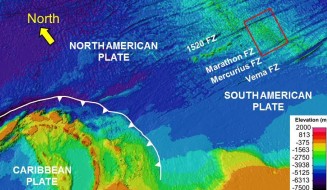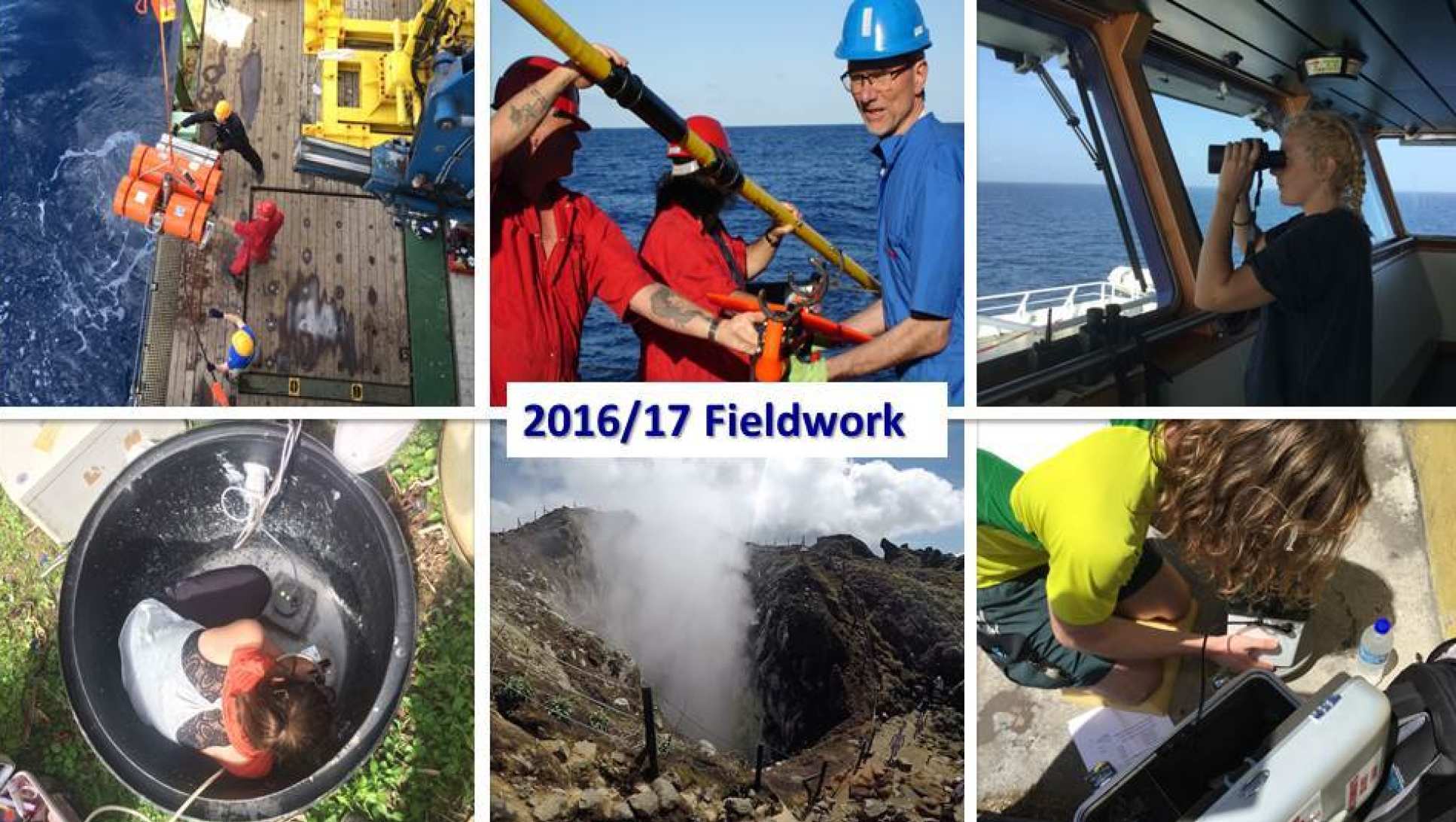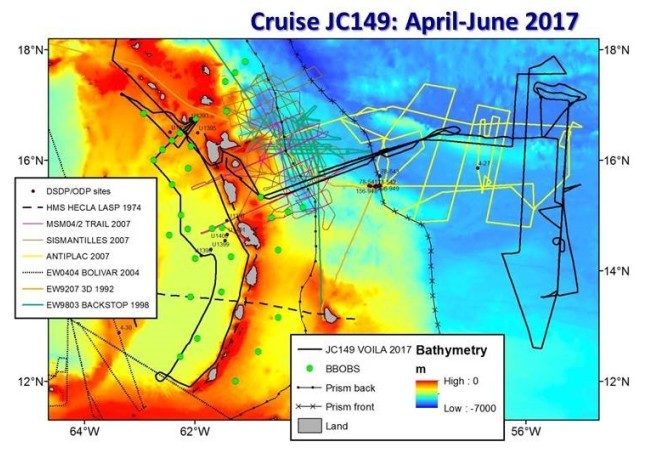Volatile recycling at the Lesser Antilles arc

The aim of the NERC VOILA (Volatile cycling in the Lesser Antilles arc) research programme is to take a holistic approach to the cycling of volatiles (water, along with other volatiles such as carbon dioxide and sulphur) into the deep Earth at the Lesser Antilles subduction zone. Here the North and South American plates, soaked with water from the Atlantic Ocean subduct beneath the Caribbean plate (Fig.1). The project combines a range of Earth scientists with skills in petrology, geochemistry, numerical modelling as well as marine geophysics to track the passage of the water as it goes into and out of the subduction zone system. Many fundamental aspects of the solid-Earth’s water cycle remain poorly understood. One of the most important interfaces is at subduction zones, but fundamental questions such as: what is the distribution of water in the down-going plate, how is slab dehydration distributed with depth and variable along strike, how does dehydration affect flow in the subduction mantle wedge, and what controls the location of the volcanic arc are unanswered. In this project we will study the Lesser Antilles arc in the Caribbean, as it represents a clear end-member in subduction zones. The incoming plate was formed at the Mid-Atlantic Ridge, which is expected to be much wetter than those in the Pacific. We will test this hypothesis as part of a new multi-disciplinary research program with scientists from 5 UK universities, and host-nation collaborators.

In March 2016 onboard the RRS James Cook (cruise JC133) we deployed a large array of seismometers on the seabed to record distant earthquakes in order to image the wedge (area between the top of the underlying subducting slab and the seabed). We will use methods similar to medical X-ray imaging to determine the seismic velocity and attenuation structure and hence the pathways of the water and melt. The seismic array will also record local earthquakes from the scraping of the North American and Caribbean plates which will help regional hazard assessment and answer specific questions such as what is the link between pathways of fluids and the types of earthquakes? The VOILA passive array is the largest of its type ever deployed at an Atlantic subduction zone.

In April-June 2017 we returned on the RRS James Cook (JC149) to pick up the seabed seismometers (and their precious data recordings) and we collected a set of controlled-source seismic data on the incoming plate (Fig.3). The project used 49 Ocean-bottom seismometers and a 3 km long surface towed streamer. From the data we will determine the hydration of the incoming plate, and specifically whether it varies along the strike of the arc. The experiment will target a portion of the incoming plate covering two major fracture zones and the segment in between and will compare its structure with that at the peak of the fore-bulge (generated by bending of the plate as it enters the subduction zone). Combining the different observations allows us to constrain the along-arc distribution of faulting and degree of serpentinisation of the incoming plate.
Publications
People
- Jenny Collier
- Saskia Goes
- Jamie Wilkinson
- Richard Davy
- Rob Allen (PhD student)
External Collaborators
- Tim Henstock (Southampton University)
- Andreas Rietbrock (Liverpool University)
See also